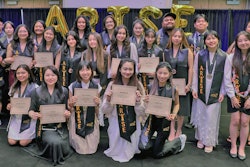 Chico State financial aid advisor MaiHoua Lo found that only 7 percent of Hmong American students graduated from their institution a year ago after enrolling as freshmen in 2009.
Chico State financial aid advisor MaiHoua Lo found that only 7 percent of Hmong American students graduated from their institution a year ago after enrolling as freshmen in 2009.
Lo’s presentation would coincide with the university’s spring preview, in which academic deans and student services officials welcome onto campus all high school seniors who have been admitted, along with their families, in efforts to coax them into enrolling in the fall. Many parents of Hmong students lack college degrees, so Lo felt that extra outreach was essential. She even called the families to explain the importance of the university’s open house.
But, none of them turned out for the event — an outcome that frustrated Lo.
She and her Hmong colleagues from Chico State shared such anecdotes last week during the annual conference of Asian Pacific Americans in Higher Education (APAHE). Since its 1987 inception, the organization has developed programs and addressed issues impacting Asian Americans and Pacific Islanders, such as the difficulties and disparities faced by some of the ethnic subgroups.
In a session focused on advocacy for Hmong American college students, Lo and her Chico State co-presenters gave a glimpse into factors that resulted in an abysmal 7 percent of those students graduating from their institution a year ago, after enrolling as freshmen in 2009. And at least 40 percent of the 2009 cohort was no longer enrolled a year ago. The Chico State educators researched Hmong student populations at Fresno State and Sacramento State and found similarly poor graduation and retention rates.
One survey of Chico State’s Hmong students indicated that three fourths of respondents said their parents had never visited the campus. The reasons included parents being ambivalent or too busy or students believing such visits had nothing to do with their academic success.
“We have to find ways to get parents involved,” Lo said. “We need to educate the parents — maybe it’s bringing them for overnight stays on campus — but they need to understand how our students live.”















